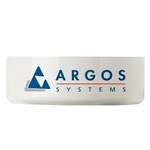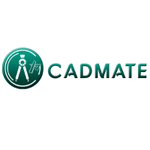Description

nanoCAD

Redbracket HUB
Comprehensive Overview: nanoCAD vs Redbracket HUB
Overview of nanoCAD and Redbracket HUB
a) Primary Functions and Target Markets
nanoCAD:
nanoCAD is a versatile CAD (Computer-Aided Design) software aimed at providing a cost-effective alternative for engineers, architects, and designers who require robust design tools. The primary functions of nanoCAD include:
- 2D and 3D Design Capabilities: It offers comprehensive tools for both 2D drafting and 3D modeling.
- DWG Compatibility: Full native support of DWG file format, making it easy for professionals to collaborate and share files seamlessly.
- Customizable Interface: Allows users to customize the interface as per their needs, improving workflow efficiency.
- Automation and API: Supports a variety of APIs for automation, allowing users to enhance functionality through scripts and macros.
- Cost-Effective Solution: Designed to offer advanced features at a lower price point compared to leading CAD software like AutoCAD.
Target Market: nanoCAD primarily targets small to mid-sized engineering, architecture, and construction firms, as well as freelance professionals who need comprehensive CAD tools without the associated high cost.
Redbracket HUB:
Redbracket HUB is a cloud-based collaborative platform for architects and interior designers, providing tools to streamline project management and documentation. Its primary functions include:
- Project Management: Tools for task assignment, scheduling, and tracking project progress.
- Document Management: Secure storage and management of drawings, documents, and communications in a centralized hub.
- Collaboration Tools: Enables collaboration between team members and stakeholders, facilitating efficient communication.
- Design Templates and Libraries: Provides a range of templates and libraries for efficient design work.
- Integration with Design Software: Can integrate with various design software, enabling seamless workflow integration.
Target Market: Redbracket HUB targets architecture and design firms that require collaborative project management solutions. It caters to designers looking for a unified platform to enhance communication and productivity within teams.
b) Overall Market Share and User Base
-
nanoCAD has carved out a niche for itself as an economical CAD solution, especially in markets where cost is a significant concern. Although it does not hold a substantial market share compared to industry giants like AutoCAD, it is well-regarded in markets prioritizing cost-efficiency and straightforward functionalities.
-
Redbracket HUB operates in a more specialized market, focusing on project management within design firms. While it may not have a wide-reaching market share compared to larger project management and collaboration tools, it serves a critical role for its niche audience by providing targeted functionalities that meet the specific needs of architectural and design teams.
c) Key Differentiating Factors
-
Cost and Accessibility: nanoCAD offers a more budget-friendly solution compared to traditional CAD tools, making it accessible for smaller firms and individual professionals. In contrast, Redbracket HUB leverages a subscription-based model that focuses on providing value through collaboration and project management features tailored for design teams.
-
Functionality Focus: nanoCAD is more focused on delivering CAD-specific functionalities with a strong emphasis on drafting and modeling. On the other hand, Redbracket HUB is more centered around collaboration and project management, facilitating better communication and coordination across design projects.
-
Integration and Ecosystem: Redbracket HUB’s strength lies in its ability to integrate with various existing design software and tools, offering a seamless transition and effective communication within projects. nanoCAD, while it allows API access, is generally focused on being a standalone tool for CAD design.
In summary, nanoCAD and Redbracket HUB serve different segments within the design and architecture industry. nanoCAD offers an affordable CAD design tool with essential functionalities, while Redbracket HUB provides a collaborative platform focused on project management and document organization for design teams. These differentiators define their user base and the specific market segments they effectively target.
Contact Info

Year founded :
2022
+49 5645 8626
Not Available
Norway
http://www.linkedin.com/company/nanocad

Year founded :
2017
+91 79276 82425
Not Available
India
http://www.linkedin.com/company/redbracket
Feature Similarity Breakdown: nanoCAD, Redbracket HUB
When comparing software tools like nanoCAD and Redbracket HUB, it's essential to examine their feature sets, user interfaces, and any unique attributes that distinguish them. Here’s a breakdown based on the requested criteria:
a) Core Features in Common
nanoCAD:
- CAD Functionality: nanoCAD provides comprehensive computer-aided design features, including 2D drafting, 3D modeling, and interoperability with other CAD tools through DWG format support.
- Customization and Automation: It allows users to customize the interface and automate tasks through APIs and programming languages like AutoLISP and .NET.
Redbracket HUB:
- Document Management: Redbracket HUB operates as a collaboration platform focused on document management, sharing, and control within construction and design projects.
- Project Management: It offers project management features including task assignment, tracking, and team collaboration tools.
Common Core Features:
- Collaboration Tools: Both platforms offer collaboration features enabling team interactions and data sharing.
- Interoperability: They support interoperability with various file types and formats, although nanoCAD is more focused on CAD file types.
- User Customization: Users can customize the interface to some extent in both applications, although the depth of customization may differ.
b) User Interface Comparison
nanoCAD:
- Traditional CAD Interface: nanoCAD features a classical, ribbon-based user interface typical for CAD applications, with toolbars, command lines, and customizable workspace layouts.
- Technical Focus: The interface is designed for professionals familiar with CAD environments, prioritizing precision and thorough feature access.
Redbracket HUB:
- Modern, Web-Based Interface: Redbracket HUB likely uses a more modern, web-based design given its function as a document management and collaboration platform. This can include dashboards, drag-and-drop functionality, and easily accessible menus.
- User-Friendly: The interface focuses on providing a straightforward user experience for document and project management, making it accessible to a broader range of users without extensive CAD experience.
c) Unique Features
nanoCAD:
- Extensive CAD Tools: nanoCAD’s unique strength lies in its comprehensive set of drafting and modeling tools, which are comparable to other established CAD software, making it versatile for engineers and designers.
- Cost-Effectiveness: Known for providing robust CAD capabilities at a lower price point compared to larger competitors.
Redbracket HUB:
- Construction-Specific Features: Redbracket HUB is tailored specifically for the architecture, engineering, and construction (AEC) industry, with features such as document version control, RFIs (Request for Information), and integration with other AEC software.
- Integrated Project Management: It integrates project management functionalities directly within the platform, streamlining the workflow for construction projects.
In summary, nanoCAD excels in providing a full-featured CAD environment for design professionals, while Redbracket HUB focuses on enhancing collaboration and management within construction projects. The choice between them would depend on whether the primary need is sophisticated CAD capabilities or streamlined document and project management in the AEC context.
Features

User Interaction
Data Management
Core Drawing Tools
Collaboration Tools

Customization Options
Collaboration Tools
Efficient Project Management
Resource Management
Best Fit Use Cases: nanoCAD, Redbracket HUB
nanoCAD and Redbracket HUB cater to different needs within the design and architecture space, each with unique strengths suited for particular use cases. Here's how they fit into various business scenarios and industry verticals:
nanoCAD
a) Best Fit for Businesses or Projects:
-
Small to Medium-Sized Architecture or Engineering Firms:
- nanoCAD is an affordable alternative to more expensive CAD software, making it attractive for small to medium-sized firms that need robust CAD features without a significant financial investment.
-
Projects Requiring High Precision and Detailed Drafting:
- It is well-suited for projects that require accurate 2D technical drawings, such as mechanical engineering designs, architectural plans, and civil engineering blueprints.
-
Businesses Transitioning from Traditional Drafting to Digital:
- Firms that are moving away from paper-based designs and need a cost-effective, easy-to-adopt CAD solution will find nanoCAD appealing.
-
Educational Institutions:
- Its affordability and ease of use make it an excellent choice for educational settings where students can learn CAD skills without a high software cost.
d) Industry Verticals and Company Sizes:
- Industries: Construction, Civil Engineering, Mechanical Engineering, Architecture.
- Company Sizes: Small to mid-sized companies benefit the most due to its cost-effectiveness and comprehensive features.
Redbracket HUB
b) Preferred Scenarios:
-
Architecture and Interior Design Firms Focusing on Collaboration:
- Redbracket HUB excels in environments where collaboration between architects, interior designers, and clients is essential. It offers project management tools specifically designed for design workflows.
-
Businesses Needing Comprehensive Project Management Tools:
- For firms that require a centralized platform for managing design projects, tasks, resources, and documentation, Redbracket HUB is designed to streamline these processes.
-
Firms Prioritizing Design Workflow Optimization:
- Companies looking to optimize their design and communication processes will benefit from Redbracket HUB’s features that support file sharing, feedback, and version control.
-
Remote or Distributed Teams:
- With its collaborative and cloud-based features, it supports remote work environments where teams need to stay connected and organized across different locations.
d) Industry Verticals and Company Sizes:
- Industries: Architecture, Interior Design, Construction.
- Company Sizes: Suitable for small to large firms, especially those with a focus on teamwork and project coordination.
Comparison and Summary
While nanoCAD is primarily a CAD drafting tool with a focus on detailed and precise technical drawings, Redbracket HUB serves as a project management platform tailored for design workflows. nanoCAD is ideal for firms needing a budget-friendly yet powerful CAD solution, while Redbracket HUB is perfect for teams needing robust collaboration and project management capabilities. Both tools can cater to a range of industry verticals but serve distinct purposes within those environments.
Pricing

Pricing Not Available

Pricing Not Available
Metrics History
Metrics History
Comparing teamSize across companies
Conclusion & Final Verdict: nanoCAD vs Redbracket HUB
To provide a comprehensive conclusion and final verdict for nanoCAD and Redbracket HUB, we need to consider various aspects such as cost, features, usability, support, and the specific needs of the users. Here is an overview:
a) Best Overall Value
- nanoCAD: nanoCAD is known for being a cost-effective alternative to more expensive CAD software, offering a robust set of features that are comparable to higher-end products. It is particularly favored for 2D CAD tasks and provides a familiar interface for those accustomed to traditional CAD tools. Its pricing model, which includes a free version with optional paid upgrades, makes it accessible for individuals and small businesses.
- Redbracket HUB: This product is more specialized, catering primarily to architectural professionals and firms. It focuses on project management, collaboration, and integration with other architectural software. While it may be pricier than nanoCAD, it offers unique benefits for its target market.
Best Overall Value: If you're looking for a general-purpose CAD tool at an affordable price, nanoCAD offers the best overall value. However, if your needs align more with architecture-focused project management and collaboration, Redbracket HUB might be the better choice.
b) Pros and Cons
nanoCAD:
- Pros:
- Affordable pricing, including a free version.
- Comprehensive 2D drafting capabilities.
- Familiar user interface for those with prior CAD experience.
- Compatibility with DWG files ensures smooth interoperability.
- Cons:
- Limited 3D modeling features compared to higher-end CAD software.
- May require additional plugins or third-party tools for advanced functionalities.
Redbracket HUB:
- Pros:
- Tailored for architecture professionals with specific project management features.
- Strong emphasis on collaboration tools and team workflows.
- Facilitates integration with other architectural software.
- Cons:
- Higher cost, which may not be justified for users outside the architectural field.
- Steeper learning curve for those unfamiliar with specialized features.
c) Recommendations for Users
-
For General CAD Users: If your primary need is for a reliable and cost-effective CAD tool for drafting, go with nanoCAD. It will serve most general CAD needs without breaking the bank.
-
For Architectural Professionals: If your work revolves around architectural projects that require collaboration and project management, consider Redbracket HUB. Although it is more expensive, the investment could be worthwhile due to its tailored features.
-
Hybrid Needs: If you require both a strong CAD platform and project management tools, starting with nanoCAD and exploring integrations or complementary tools could be a balanced approach unless your workflow heavily depends on the specific features offered by Redbracket HUB.
In summary, your decision should align with your specific use case and budget. Evaluate your current and future project needs, potential collaboration requirements, and any existing software ecosystem you may already be using.
Add to compare
Add similar companies



